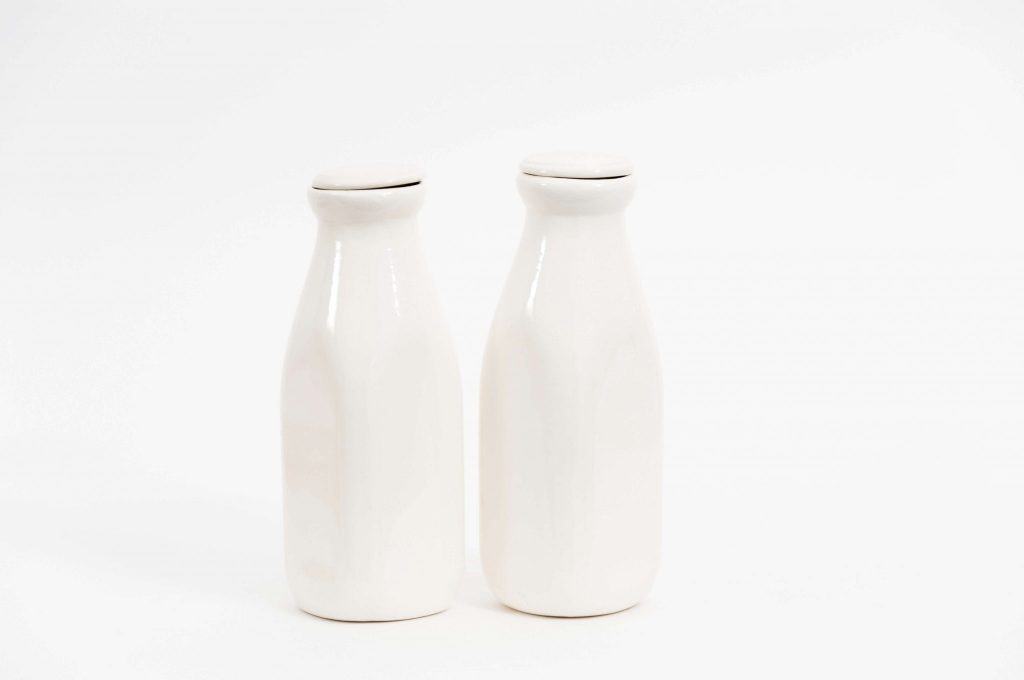
The dairy food group includes milk and any food made from milk which is high in calcium. Since cream cheese, butter and cream are not, they are generally not included in this food group, while soy-milk is (particularly when calcium-fortified).
Please note: This post contains affiliate links.
Nutritional Value
Dairy products come mostly from cow milk and have a significant amount of health-promoting essential nutrients. They are high in protein content (and contain all essential amino-acids) but also in calcium, phosphorus and fat-soluble vitamins such as vitamins D and K.
Being of animal origin, milk can be high in saturated fat, so it should be consumed in moderation for adults. However, it's ideal for the growth and development of children, especially under 2 years old.
Cow's milk can be hard to digest for children under 1 but cow milk products like cheese, yogurt, and kefir are much easier on a baby's digestive system. These products have been through a fermentation process that breaks down carbohydrates and produces probiotic bacteria. They, therefore, contain less lactose – one of the main causes of intolerance to dairy. Probiotic bacteria are also beneficial for the gut, preventing diarrhea, constipation, bloating and gas and in general helping with digestion.
Different Kinds of Dairy
Full-Fat or Fat-Free
Whole milk is the kind that comes from the cow (or goat etc). But, skim milk (fat-free) is a popular alternative for many people. Skim milk has had all the fats removed while retaining the vitamins and minerals.
However, removing the fats doesn't help the milk's taste and many fat-free alternatives have added sugar to compensate (high fructose corn syrup being the most common additive), which is not good. You can find some without added sugar but whole milk is better all-round for children.
The Cow vs. Goat Debate
Whether cow or goat milk is ultimately better for you is a matter of debate. For children under the age of 1, in general milk of any kind is not recommended. At such a young age, milk (cow or goat) is hard to digest and doesn't have enough of the essential nutrients for growth at that age. So until their first birthday, it's best to stick to breastmilk or formula.
After the age of 1, once children can start drinking milk, whether they drink cow or goat is more a matter of preference than anything else. In either case, you should be looking for milk fortified with essential vitamins and minerals (in particular vitamin D). Whether one or the other kind of milk is more easily digested is debated, but ultimately depends on the individual. So you're best off deciding by seeing which one your child seems to prefer, or sticking with one if they don't show any digestive issues.
If you are using cow's milk, aim to buy 100% grass-fed. This means the milk is from cows that haven't been fed processed grain-based food and results in milk which is higher in omega 3s, vitamin E and beta-carotene.
Allergies
Although healthy and very important for children's growth and development, dairy products are the most common source of allergies in children.
The most common is lactose intolerance which occurs when the body has insufficient amounts of the lactose digesting enzyme (lactase). Symptoms include stomach pain, bloating, gassiness, and diarrhea. Cow milk products may not present the same problems depending on the person.
Allergies to specific proteins in cow's milk can occur in children less than 1 and usually means all cow's milk products should be avoided. The allergy often goes away by 3 years of age and in the meantime, goat milk can be an allergy-free alternative. If not, and generally for vegans, it will be important to find other sources of protein, calcium and vitamin D (e.g. beans, lentils, dark green leafy vegetables).
Daily Requirements
Daily requirements change rapidly between birth and 2 years of age, so we recommend you check out the age-specific meal plans for those ages.
| Age (years) | Daily recommendation |
| 2 - 3 | 2 cups |
| 4 - 8 | 2.5 cups |
| 9 - 13 | 3 cups |
| 14 - 18 | 3 cups |
| 19 - 30 | 3 cups |
| 31 - 50 | 3 cups |
| 51+ | 3 cups |
Portion Sizes
Check this out for a reference guide for how much of a specific dairy product is meant by "2 cups".
Resources
- USDA (United States Department of Agriculture). www.choosemyplate.gov.
- Mateljan G. (2007) The World's Healthiest Foods. Essential Guide for The Healthiest Way of Eating. Seattle, Washington.
- Basnet, S., Schneider M., Gazit, A., Mander G., Doctor, A. (2010) Fresh Goat's Milk for Infants: Myths and Realities—A Review. Pediatrics. 125(4)
